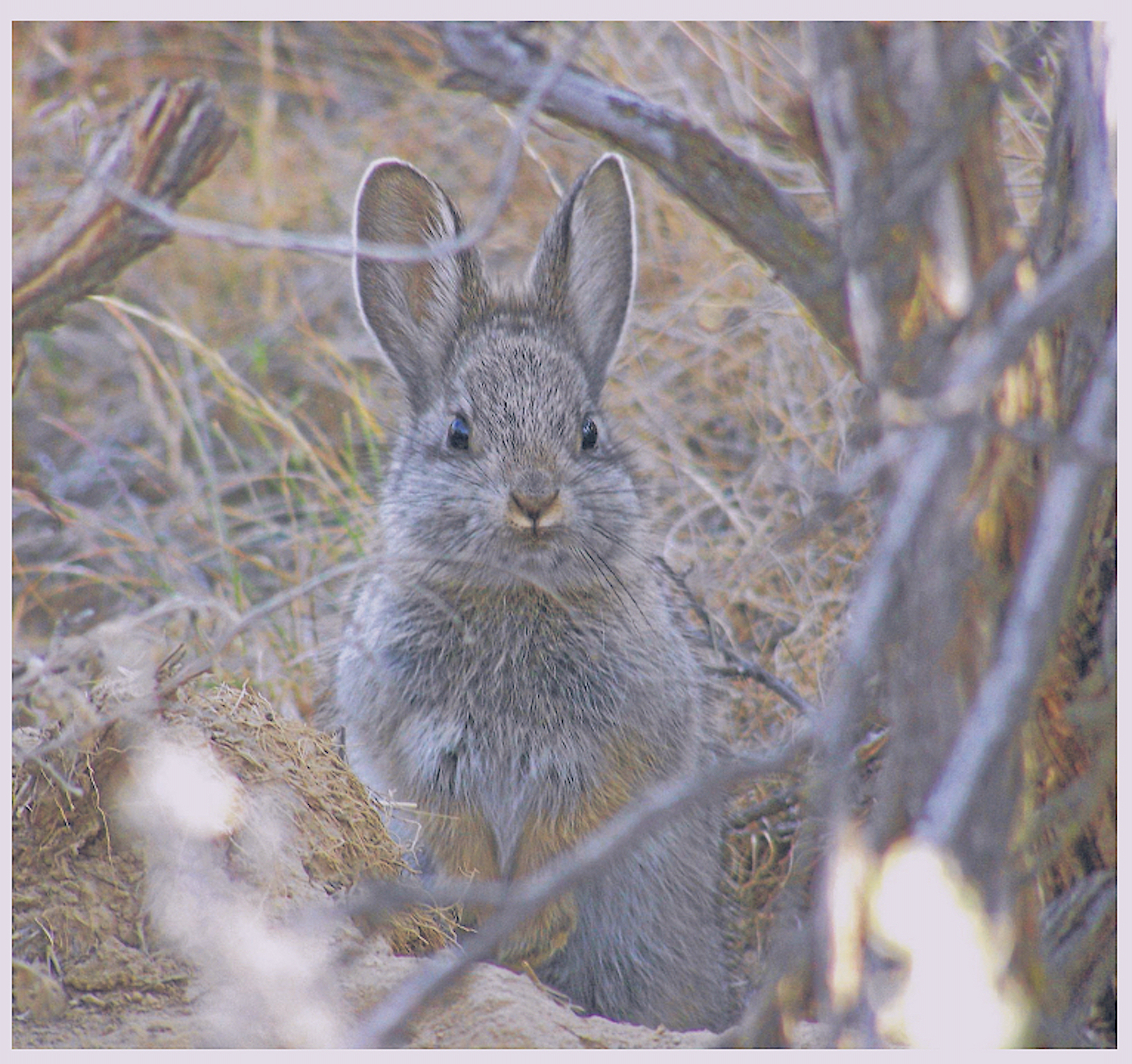Groups seek endangered status for tiny animals, Wyoming one of last strongholds of pygmy rabbits

Conservation groups are demanding the U.S. Fish and Wildlife Service protect pygmy rabbits under the federal Endangered Species Act. Photo courtesy of Washington Fish and Wildlife.
CASPER — Weighing less than 1 pound, with short ears, little legs and an endearingly “scampering gait,” the pygmy rabbit is the smallest rabbit species in America. Worryingly, though, its population is also small — and getting smaller — and is now in desperate need of protection, according to a chorus of conservation scientists.
In the hope of protecting the species, a contingent of conservation groups issued a notice to sue the United States Fish and Wildlife Service for failure to respond to a petition to list the creature under Endangered Species Act, without which they believe the rabbit will face extinction.
The species was first suggested for protection in 1991, and its circumstance has only worsened since, members of the organizations Western Watersheds Project, Center for Biological Diversity, and WildEarth Guardians argue in their petition, pointing out that the rabbits today occupy as little as 10% of their known historic range.
“We’re watching the slow-motion extinction of these adorable rabbits while the Fish and Wildlife Service drags its feet,” said Randi Spivak, public lands policy director at the Center for Biological Diversity. “Endangered Species Act protection is desperately needed for these little creatures before more of their sagebrush sea habitat is lost…Time is of the essence.”
Wyoming ‘stronghold’
Wyoming’s southeast region is one of only four remaining habitat “strongholds.” Yet the species’ population is in decline here, too.
The Wyoming Game and Fish Department in 2013 conducted a population occupancy survey in the state’s southwest region and revealed a 42% occupancy rate across its predicted distribution area.
Six years later, the department conducted a more comprehensive survey to find only 15% occupancy rate throughout the predicted distribution area.
There have been no comprehensive population surveys since.
This 2019 survey coincided with a heavy winter year that may have impacted both the species populations as well survey field work, the report notes.
What are the threats?
The rabbits are under pressure from oil and gas development, which has fragmented habitat and inhibited the flow of genetic material and DNA diversity among the species.
Climate change, drought and corresponding increase in wildfires have also diminished its habitat, while the prevalence of livestock grazing has undercut their primary diet and protection: Sagebrush.
Battle with feds, and livestock
The notice to sue is the latest in a growing list of frustrations between nonprofits and feds. Conservation groups this month accused the Bureau of Land Management of systematically denying Freedom of Information Act requests — which they believe is one way the agency plays political favorites on public lands — namely, to favor livestock, which have been implicated in habitat degradation of pygmy rabbits and other species.
Livestock grazing has been shown to increase the spread of invasive cheatgrass, which can then facilitate catastrophic wildfires capable of altering sagebrush habitat permanently, says Greta Anderson, deputy director of Western Watersheds Project, who is one of four co-petitioners to give notice to sue.
Livestock is also at the crux of a debate between the agency and wild horse advocates, who’ve accused the BLM of scapegoating mustang herds for range degradation actually attributable to cattle.
‘Moral imperative’
Different from wild horses, albeit, the pygmy rabbit is a native species that doesn’t merely inhabit the sagebrush sea but plays a vital role in its larger ecosystem health.
“They have an ecological role in maintaining the biome, so if they’re lost it can also affect the regeneration and recovery of sagebrush as a habitat type,” said Anderson. “Every component in an ecosystem is critical to its function, and we can’t just keep throwing away the pieces and expect it to maintain its integrity.”
In the Sagebrush Conservation Design report issued by the U.S Geological Survey in 2022, sagebrush habitat loss in the intermountain West is estimated at approximately 1.3 million acres a year.
Elsewhere, studies suggest the spatial extent of the sagebrush sea has declined by approximately 50 percent since the arrival of European settlers in the 1800s.
“There’s really a moral imperative to not let species go extinct. I think if we use [Endangered Species Act] as the guide for decision making, it can be really powerful,” Anderson said. “There are a lot of species at risk right now. We’re facing a biodiversity crisis, and it's an all-hands-on-deck moment to prevent further losses.”
This story was published on August 18, 2024.








